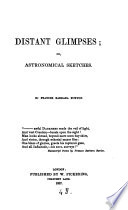 Mercury, Venus, the Earth, Mars, Vesta, Juno, Ceres, Pallas, Jupiter, Saturn, and Uranus, in the order here enumerated. Mercury, Venus, the Earth, Mars, Vesta, Juno, Ceres, Pallas, Jupiter, Saturn, and Uranus, in the order here enumerated.  An Elementary Treatise on Astronomy: In Two Parts. The First Containing, a ... - Page 14by John Gummere - 1842 - 471 pagesFull view An Elementary Treatise on Astronomy: In Two Parts. The First Containing, a ... - Page 14by John Gummere - 1842 - 471 pagesFull view - About this book
 | 1844 - 784 pages
...Around this luminary, at different distances, the following planets revolve in the order here stated — Mercury, Venus, the Earth, Mars — Vesta, Juno, Ceres, Pallas — Jupiter, Saturn, and Uranus. Of all the objects in the visible creation with which we are acquainted, there is none whose magnitude... | |
 | Edward Riddle - 1824 - 572 pages
...mean distance of about 240,000 miles. The planets, in the order of their distances from the sun, are Mercury, Venus, the Earth, Mars, Vesta, Juno, Ceres, Pallas, Jupiter, Saturn, and Herschel. — Mercury, and Venus, which are nearer the sun than the earth, are called inferior planets... | |
 | First steps - 1828 - 456 pages
...a bluish-white colour. WILLIAM. How many planets, then, are there altogether ? ELIZABETH. Eleven : Mercury, Venus, the Earth, Mars, Vesta, Juno, Ceres, Pallas, Jupiter, Saturn, and Herschel. MOTHER. As the distances of the different planets from the sun are rather difficult to remember... | |
 | Sir Richard Phillips - 1832 - 286 pages
...eighteen secondary planets or moons, and a number of comets. 361. The names of the primary planets are Mercury, Venus, the Earth, Mars, Vesta, Juno, Ceres, Pallas, Jupiter, Saturn, and Herschel. 362. The earth has one moon, Jupiter four, Saturn seven, and Herschel six. The other seven... | |
 | Nathaniel Gilbert Huntington - 1835 - 318 pages
...the same time revolving like a wheel, each on its own axis. There are eleven primary planets, viz., Mercury, Venus, the Earth, Mars, Vesta, Juno, Ceres, Pallas, Jupiter, Saturn, and HerscheL Besides these, there are 18 secondary planets or moons, which revolve around their respective... | |
 | 1835 - 240 pages
...The^pfimary planets are situated, with respect to their distances from the sun, in the following order : Mercury, Venus, the Earth, Mars, Vesta, Juno, Ceres, Pallas, Jupiter, Saturn, and the Herschell planet, or the Georgium Sidus. Of these, our Earth is accompanied by one moon, Jupiter... | |
 | William Pinnock - 1836 - 734 pages
...bodies which in our system regard the sun »s lis centre of their orbits; they are in number eleven, Mercury, Venus, the Earth, Mars, Vesta, Juno, Ceres, Pallas, Jupiter, Saturn, and Uranus. • Planetarium, an instrument made use of for showing tbe phenomena of the heavenly bodies. Pleiades,... | |
 | John Gummere - 1837 - 506 pages
...from its inventor Copernicus. The order of the planets with respect to their distances from the sun, is Mercury, Venus, the Earth, Mars, Vesta, Juno, Ceres, Pallas, Jupiter, Saturn and Uranus. that the sun's apparent orbit is an ellipse, and that the radius vector describes equal areas in equal... | |
 | Frances Barbara Burton - 1837 - 202 pages
...receive the impulses of light, heat, and motion, from the Sun. The names of these primary planets, are, Mercury, Venus, the Earth, Mars, Vesta Juno, Ceres, Pallas, Jupiter, Saturn, and Herschell. The Earth (which we inhabit,) being the third in distance from the Sun. 3rd Class. — Eighteen... | |
 | Thomas Dick - 1838 - 426 pages
...following figure the small central star represents the sun, and the circles represent the orbits of Mercury, Venus, the Earth, Mars, Vesta, Juno, Ceres, Pallas, Jupiter, Saturn, and Uranus, in the order here enumerated. The orbits of the new planets, Vesja, Juno, Ceres, and Pallas, are represented... | |
| |